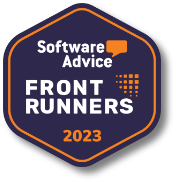Before the electronic board meeting became well-known in corporate circles, the use of tablets and smartphones was generally not encouraged in board meetings. Business leaders weren’t shy about expressing their opinions against mobile devices in the boardroom, even going so far as giving reasons why they should be banned.
Obstacles to Adoption
The main reason why mobile devices were perceived as bad was because they caused distraction in board meetings, and not engagement. Directors would sneak in an email or two under the table instead of focusing their attention on the discussions at hand, or they would excuse themselves to take a call instead of staying put in the boardroom.
But things have changed since then. As usage of mobile devices has rapidly increased in the past couple of years, the number of productivity and business apps has increased as well. Mobile devices were not just unbanned — they’re now given a center-stage role in the workplace, too, including the boardroom. This has led to more boards deciding to choose and conduct electronic board meetings or even virtual meetings.
Even with these developments, some concerns remain, such as tax concerns when majority of directors attend remotely for their meetings.
Advantages
The traditional board meeting is starting to give way to the electronic board meeting. Given the busy schedules directors have, it’s sometimes practical to attend board meetings from a remote location through a board management solution instead of traveling long distances just to be physically present. Even when directors hold the actual meetings face to face, electronic board meetings with the use of devices still provide plenty of benefits, such as a more streamlined process for preparing the agenda and board materials, reduced logistical costs, and instant access to pertinent information.
How Modern Electronic Board Meetings Work
The modern electronic board meeting is run on mobile devices such as iPads and Android tablets. Directors use either their personal or company’s device to access meeting documents and watch presentations as they happen. They can also work together on the same files regardless of their location. Many board meeting applications and paperless meeting solutions let directors make annotations directly on the board papers. A good solution would be to track their actions for the purpose of transparency and accountability. It’s a system that works just fine, and is fast becoming the new normal.
Future Developments
However, how will the electronic board meeting evolve in years to come? How will wearable technology — or any other kind of new technology, for that matter — disrupt the status quo? We don’t know the answers yet, but at least for the boardroom the advances of technology is increasingly becoming integrated.
Boardrooms are undergoing a digital transformation and with that, electronic board meetings will become the standard norm for years to come.
Jean is a Content Marketing Specialist at Convene, with over four years of experience driving brand authority and influence growth through effective B2B content strategies. Eager to deliver impactful results, Jean is a data-driven marketer who combines creativity with analytics. In her downtime, Jean relaxes by watching documentaries and mystery thrillers.










